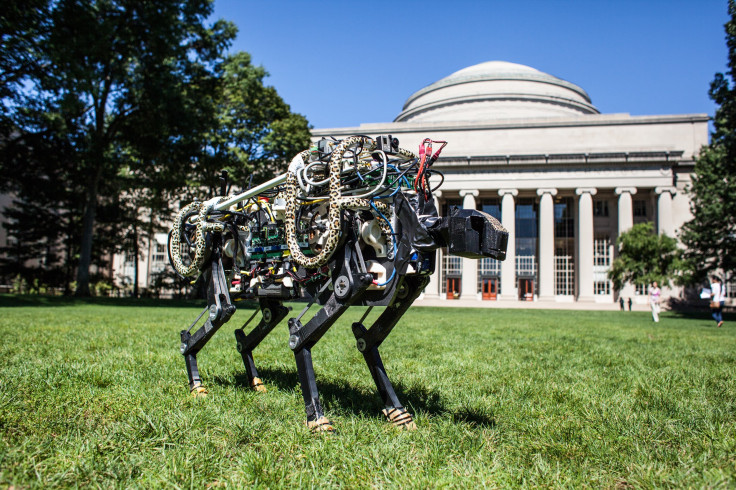Cheetah Robot Effortlessly Hurdles Obstacles In New Video, World Domination To Follow?

MIT's new project moves with the grace, speed and agility of the world's fastest land animal. The Cheetah robot has already beaten speed records, and now it can add another impressive achievement to its resume. Cheetah's handlers have trained it to "see" obstacles and jump over them while running at speeds of up to 5 mph. That might not sound like much, but it's quite an accomplishment for a bucket of (high-tech) bolts.
The on-board LIDAR visual system maps out what's in front of the robot and detects objects so Cheetah can figure out their general size and distance before it calculates a jumping angle. Like an Olympic hurdler, the Cheetah can jump over any obstacle without breaking its stride.
"A running jump is a truly dynamic behavior,” Sangbae Kim, an assistant professor of mechanical engineering at MIT, said in a statement. “You have to manage balance and energy, and be able to handle impact after landing. Our robot is specifically designed for those highly dynamic behaviors."
When robots are performing difficult tasks, they usually have a safety harness in case things don't go as the researchers expected -- you don't want that expensive robot that you've spent years developing lying in a heap on the floor. With Cheetah, a safety harness is not needed and the robot can hurdle without being tethered.
"If you want to optimize for, say, energy efficiency, you would want the robot to barely clear the obstacle — but that’s dangerous, and finding a truly optimal solution would take a lot of computing time," Kim said. The next step for Cheetah will be clearing hurdles on grass and other soft surfaces. MIT will show off Cheetah's jumping and running capabilities at the DARPA Robotics Challenge in June.
© Copyright IBTimes 2024. All rights reserved.











